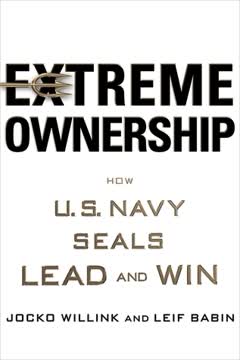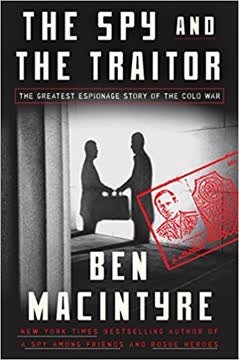Key Takeaways
1. Freedom in the workplace leads to exceptional performance
Freedom works.
Unleashing employee potential. Traditional, hierarchical "how" companies stifle creativity and initiative by telling employees exactly how to do their jobs. In contrast, liberated "why" companies focus on empowering employees to make their own decisions in pursuit of the company's vision. This approach leads to higher engagement, innovation, and overall performance.
Real-world success stories. Companies like W.L. Gore & Associates, FAVI, and Harley-Davidson have achieved remarkable results by embracing workplace freedom:
- W.L. Gore: Consistent growth and innovation for over 50 years
- FAVI: Maintained profitability and market leadership in a challenging industry
- Harley-Davidson: Dramatic turnaround from near-bankruptcy to industry leader
By trusting employees and giving them autonomy, these companies tap into the full potential of their workforce, leading to exceptional business outcomes.
2. Liberating leaders stop telling and start listening
Stop telling and start listening. Then, remove all the symbols and practices that prevent your people from feeling intrinsically equal.
Shifting leadership mindset. Liberating leaders recognize that their role is not to dictate solutions but to create an environment where employees can solve problems themselves. This requires a fundamental shift from telling people what to do to actively listening and empowering them to make decisions.
Practical steps for leaders:
- Remove symbols of hierarchy (e.g., reserved parking spaces, executive dining rooms)
- Encourage open communication across all levels of the organization
- Implement practices that demonstrate trust in employees (e.g., self-set schedules, open-book management)
- Resist the urge to provide solutions and instead ask, "What do you think we should do?"
By consistently demonstrating this new approach, leaders can gradually transform the organizational culture and unleash the creative potential of their workforce.
3. A shared vision is essential for a liberated company
Freedom is not anarchy.
Balancing freedom and direction. While liberated companies give employees significant autonomy, they still need a clear, shared vision to guide decision-making and ensure everyone is working towards common goals. This vision provides the necessary framework for employees to exercise their freedom responsibly.
Creating and communicating the vision:
- Involve employees in developing the company's vision and values
- Regularly reinforce the vision through company-wide communications
- Encourage employees to question and discuss how their actions align with the vision
- Use the vision as a decision-making tool, asking "Does this support our overall goals?"
A well-communicated and embraced vision acts as a unifying force, allowing employees to make decisions that benefit the company as a whole rather than just their individual interests.
4. Treating people as intrinsically equal is fundamental
All our dignity consists then in thought. By it we must elevate ourselves, and not by space and time which we cannot fill. Let us endeavor then to think well; this is the principle of morality.
Respect as a foundation. Liberating leaders recognize the inherent dignity and value of every employee, regardless of their position in the company. This attitude of respect and equality forms the basis for building trust and fostering a truly liberated environment.
Manifestations of equality:
- Transparent communication of company information to all employees
- Equal access to resources and opportunities for growth
- Elimination of status symbols and special privileges for executives
- Encouraging input and ideas from all levels of the organization
By consistently demonstrating that all employees are valued and respected, companies create an atmosphere of trust and collaboration that drives engagement and performance.
5. Self-motivation thrives when universal needs are met
Man is by nature motivated.... His behavior is influenced by relationships between his characteristics as an organic system and the environment.
Understanding human motivation. Liberating leaders recognize that people are naturally motivated when their fundamental needs are met. These universal needs include:
- Relatedness: feeling connected and valued by others
- Competence: having the skills and knowledge to succeed
- Autonomy: having control over one's actions and decisions
Creating a nourishing environment:
- Foster strong relationships and a sense of community within the company
- Provide ample opportunities for learning and skill development
- Give employees control over their work processes and schedules
- Ensure that work is meaningful and connected to the company's vision
By satisfying these universal needs, companies create an environment where employees are intrinsically motivated to perform at their best, eliminating the need for external rewards or punishments.
6. Natural leadership emerges in freedom-based environments
If you put fences around people, you get sheep. Give people the room they need.
Empowering organic leadership. In liberated companies, leadership is not confined to those with formal titles. Instead, natural leaders emerge based on their expertise, initiative, and ability to rally others around a common goal.
Fostering natural leadership:
- Remove hierarchical barriers that prevent people from taking initiative
- Encourage employees to identify and pursue opportunities for improvement
- Provide resources and support for employee-led projects
- Recognize and celebrate instances of natural leadership
By creating an environment where anyone can step up to lead when needed, companies tap into a wealth of previously untapped talent and ideas, driving innovation and adaptability.
7. Maintaining a liberated culture requires ongoing vigilance
One drop of urine in the soup is too much—and you can't get it out.
Sustaining freedom over time. Building a liberated company is not a one-time event but an ongoing process that requires constant attention and reinforcement. Even small compromises or backslides can erode the culture of freedom.
Strategies for maintaining a liberated culture:
- Regularly reinforce and discuss the company's values and vision
- Train new hires thoroughly in the company's unique culture
- Address violations of the culture swiftly and decisively
- Empower long-time employees to act as culture keepers
- Continuously seek feedback and adapt practices as needed
Liberating leaders recognize that maintaining a freedom-based culture is their primary ongoing responsibility. By remaining vigilant and consistently modeling the desired behaviors, they ensure that the benefits of workplace freedom continue to drive exceptional performance over the long term.
Last updated:
FAQ
What's Freedom, Inc. about?
- Employee Empowerment: Freedom, Inc. by Brian M. Carney focuses on how companies can enhance productivity and growth by empowering employees. It argues that freedom and responsibility lead to more engaged and motivated employees.
- Case Studies: The book includes examples from companies like W. L. Gore & Associates and FAVI, illustrating successful implementation of liberation strategies.
- Cultural Transformation: It emphasizes the need to transform corporate culture to support self-direction and equality, moving away from traditional hierarchical structures.
Why should I read Freedom, Inc.?
- Innovative Insights: The book challenges conventional management wisdom and offers fresh perspectives on creating a dynamic workplace.
- Real-World Applications: Through real-life examples, it demonstrates how freedom and empowerment can lead to tangible business success.
- Inspiration for Change: It serves as a guide for those interested in fostering a more engaged workforce or frustrated with traditional management practices.
What are the key takeaways of Freedom, Inc.?
- Empowerment Leads to Success: Giving employees decision-making freedom results in higher productivity and innovation.
- Culture is Crucial: A supportive culture valuing equality and self-direction is essential for a liberated workplace.
- Universal Needs: Addressing self-direction, growth, and equality can transform the workplace into a more fulfilling environment.
What are the best quotes from Freedom, Inc. and what do they mean?
- “If you put fences around people, you get sheep.”: This highlights the negative impact of bureaucracy on creativity and initiative.
- “The price of liberty is eternal vigilance.”: Leaders must actively maintain a culture of freedom, requiring ongoing effort and commitment.
- “You can’t step in the same river twice.”: This emphasizes the need for continuous adaptation in ever-changing business environments.
How does Freedom, Inc. define self-direction?
- Self-Direction Explained: It is the ability of employees to make decisions about their work without constant management approval.
- Importance in the Workplace: Self-direction leads to higher job satisfaction and better performance as employees take ownership of their tasks.
- Supporting Self-Direction: Companies must provide resources, training, and information to empower employees to act confidently.
What is the difference between “how” companies and “why” companies in Freedom, Inc.?
- “How” Companies: Characterized by hierarchical structures and bureaucratic control, leading to disengagement.
- “Why” Companies: Focus on the purpose behind work, encouraging employees to embrace the company’s vision.
- Impact on Performance: “Why” companies empower employees, leading to higher engagement and better results.
How can a company implement the principles from Freedom, Inc.?
- Start with Listening: Actively listen to employees to understand their needs and concerns, building trust and respect.
- Communicate a Clear Vision: Share a compelling vision that aligns with company goals and values, ensuring employee connection.
- Encourage Self-Direction: Create an environment that allows employees to self-direct their work, fostering innovation.
What role does leadership play in Freedom, Inc.?
- Culture Keepers: Leaders must actively maintain the principles of freedom within the organization.
- Facilitators of Change: Empower employees to take ownership of their work and decisions, shifting from top-down management.
- Visionary Guidance: Provide a clear vision while allowing employees the freedom to explore how to achieve it.
What are the challenges of creating a liberated company as described in Freedom, Inc.?
- Resistance to Change: Overcoming resistance from employees accustomed to traditional management styles requires patience.
- Maintaining Accountability: Ensuring accountability without reverting to controlling behaviors can be challenging.
- Balancing Freedom and Structure: Striking the right balance is essential to avoid chaos or stifling creativity.
How does Freedom, Inc. address employee motivation?
- Intrinsic vs. Extrinsic Motivation: True motivation comes from within, not from external rewards.
- Nourishing Environment: Build an environment satisfying employees’ needs for relatedness, competence, and autonomy.
- Empowerment through Trust: Trusting employees to make decisions fosters ownership and responsibility.
What examples of liberated companies are highlighted in Freedom, Inc.?
- W. L. Gore & Associates: Known for its innovative culture, encouraging initiative and decision-making without constraints.
- FAVI: Transformed under Jean-François Zobrist’s leadership, prioritizing employee autonomy and customer satisfaction.
- Sun Hydraulics: Thrived by empowering employees and fostering a culture of collaboration and innovation.
What is the significance of the title Freedom, Inc.?
- Freedom as a Core Principle: Reflects the importance of freedom in the workplace for thriving companies.
- Incorporating Freedom into Business: Encourages leaders to adopt these principles practically in business settings.
- Cultural Shift: Implies a shift from traditional management to a more liberated and egalitarian approach.
Review Summary
Freedom, Inc. receives high praise for its inspiring insights on liberated organizations. Readers appreciate the book's practical examples and down-to-earth approach compared to similar works. Many find it thought-provoking, highlighting concepts like trust, empowerment, and employee dignity. Some criticize the repetitive nature and excessive examples, while others value the comprehensive case studies. The book challenges traditional management structures and offers a fresh perspective on creating fulfilling work environments. Overall, it's considered a must-read for those interested in alternative organizational models and employee-centric leadership.
Similar Books








Download PDF
Download EPUB
.epub digital book format is ideal for reading ebooks on phones, tablets, and e-readers.




